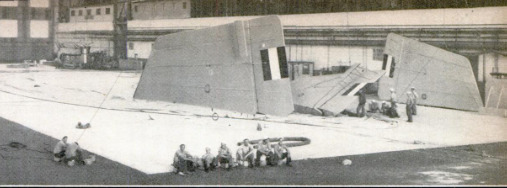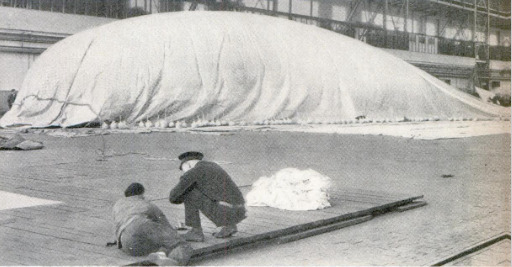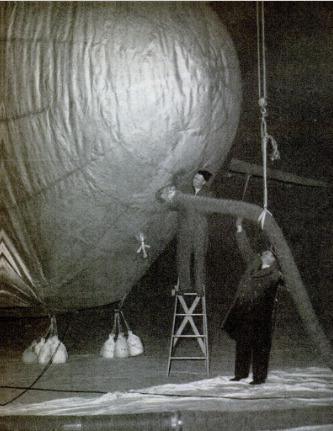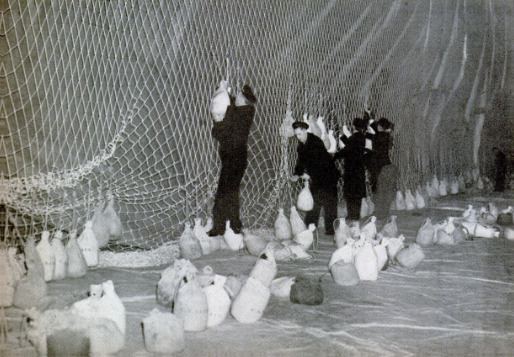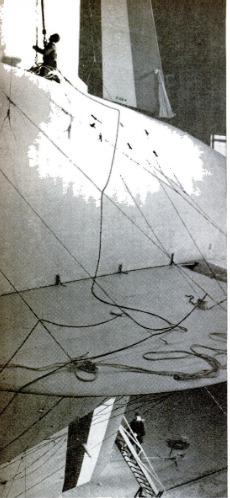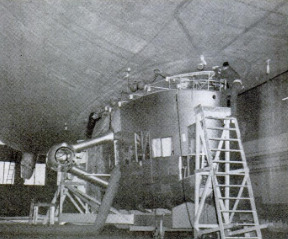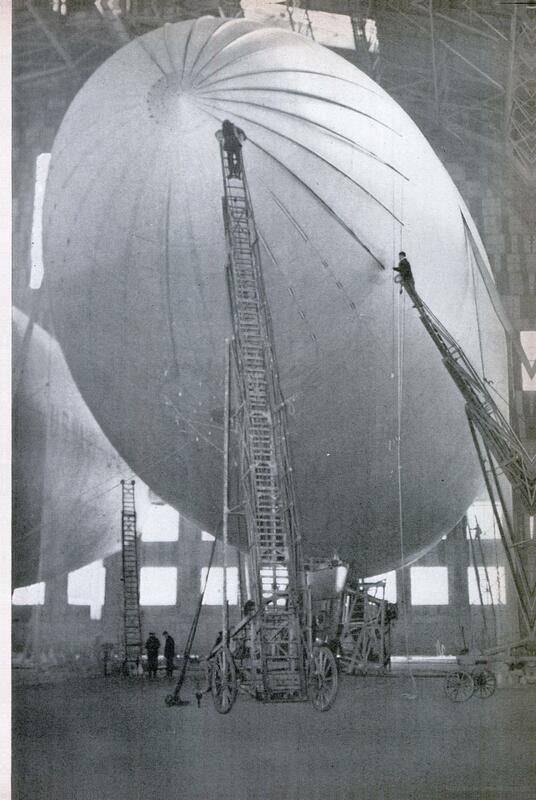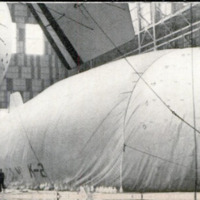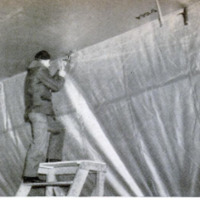-
Title (Dublin Core)
-
Gas bag fleet
-
Article Title and/or Image Caption (Dublin Core)
-
Title: Gas bag fleet
-
extracted text (Extract Text)
-
IN THE spectacular development of aero-
nautics under the compulsion of war and
defense, public attention has been focused
on the huge bombers and wasplike fighter
and interceptor planes. These are instru-
ments of battle and their movement is at-
tended by tense and breathless drama. Little
has been said of the lighter-than-air craft,
yet the U. S. Navy—yes, and the Army,
too—are going quietly ahead in experimen-
tal development of this phase of national
defense.
Nearly every morning, a great blimp rises
in the dawn wind above the naval air sta-
tion at Lakehurst, N. J., and heads out to
sea across the curling rollers breaking on
the New Jersey shore.
In the little cabin at-
tached to the belly of the
ship her two officers and
six men move about their
tasks with the efficiency
that comes from long and
meticulous training. All
day long the ship remains
over the sea, perhaps 100
or 200 miles out, or hug-
ging the shore. Her speed
ranges from 75 miles an
hour—twice that of the
fastest surface vessel—to
Zero.
At the Lakehurst sta-
tion, under Commander
George H. Mills, training of officers and men
is concentrated on nonrigid ships. There are
three types of lighter-than-air ships: rigid,
semirigid, and nonrigid. Rigid ships are
the dirigibles—like the Los Angeles, recent-
ly scrapped, and the ill-fated Shenandoah,
Akron, and Macon—in which the bag is
built around a metallic framework.
Semirigid ships are those which have a
certain amount of framework within the
bag. The only ship which approaches this
class in the U. S. Navy is the ZMC-2. It is
150 feet in length and has a gas capacity
of 202,000 cubic feet.
Nonrigid ships, or blimps, have no inter-
nal structure at all. The shape of their bags
is maintained by gas pres-
sure alone, and for this
reason they are often re-
ferred to as pressure ships.
Ships of this nature at the
Lakehurst hangar are the
K-1, 220 feet long, gas
capacity 320,000 cubic
feet; the K-2, 250 feet
long, gas capacity, 404,000
cubic feet; two “TO”
ships, designed in 1930,
240 feet long, gas capacity
384,000 cubic feet; two
“L" ships, L-1 and L-2,
148 feet long, gas capac-
ity, 123,000 feet; and the
G-1, 187 feet long, gas
-
Contributor (Dublin Core)
-
John Watson (article writer)
-
Language (Dublin Core)
-
Eng
-
Date Issued (Dublin Core)
-
1941-07
-
pages (Bibliographic Ontology)
-
82-87
-
Rights (Dublin Core)
-
Public domain
-
Archived by (Dublin Core)
-
Sami Akbiyik
 Popular Science Monthly, v. 139, n. 1, 1941
Popular Science Monthly, v. 139, n. 1, 1941


